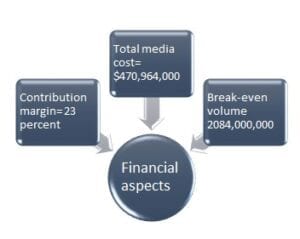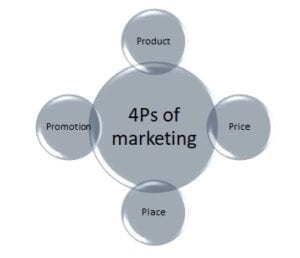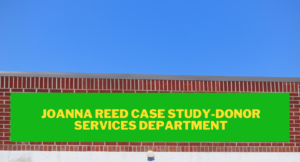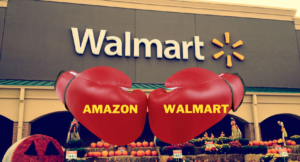Strategic issues and problem:
Cadbury made different strategic marketing decisions related to the Crush brand. The first problem is that the company has to make a notable decision and pay attention to the orange flavor. The second problem is that the company has to re-establish the bottling network for the crushing line.
The final strategic problem issue is that the company has to develop the promotion and advertising strategy which included and establishing the strategies, objectives, and expenditures (Vrontis & Thrassou, 2006).
Market analysis:
Market structure:
Cadbury operates in the monopolistic competitive market structure as well as in this market structure they have been able to control over the inflated prices. Cadbury differentiates its brand from the competitors through its various trademarks, logo, and quality. The target market of Cadbury is 18 to 24-year-olds (Harrison, 2011).
Competitors:
The competitors of Cadbury are
- Nestle
- Coca Cola
- Pepsi
- Dr. Pepper
PEST analysis:

Political:
The political factor is an impact on the growth in the food and beverage industry. Cadbury can easily maintain offshore manufacturing and supply through the import quotas.
Economic:
Cadbury’s international growth is facing threats due to change in supply and demand, exchange rates changing as well as the fluctuation in the purchasing power per capita (Harrison, 2011).
Social:
Cadbury’s international growth is facing threats due to the changing behavior of customers as well as the Management concentration on fitness and health. Consumers are becoming more health-conscious nowadays.
Technological:
The company is using the web-based application to sell its products all over the world. The use of technology is important for the company for growth.
Mission:
“The mission of the company is to provide quality as well as the company is focusing on the quality of the product. The company name is itself providing the quality of the customers.”
Vision:
“The vision of the company is to become the best and biggest confectionery company of the world as well as to provide high-quality products to its customers.”
Objectives:
- To survive in the market.
- Provide high-quality products.
- Achieve a competitive advantage as well as achieve revenue growth of twenty percent every year.
Financial aspects:

SWOT analysis:
Strenght:
The volume case of the Cadbury supermarket are increasing year-over-year, it shows that the Cadbury has the sting market image. Crush also has high brand awareness in the market. The company is providing a high-quality beverage.
Weakness:
The company is sending the less amount of money on the advertisement of the crush as compared to its competitors. In the orange category crush is the only available in some market it is 62% of the overall market.
Opportunities:
Cadbury should reposition the brand in the market as well as the company uses the different media campaign to advertise their products. The brand should re-establish its relation with different new and existing bottlers that ill help them to expand in the market.
Threats:
Cadbury has many competitors, so the company has to develop quality products to compete with its competitors.
Alterative action:
Alternative one:
Re-position the crush as a soft drink so that the family can easily choose this drink, as well as the company, should use the less amount of sugar in manufacturing so that the health-conscious people can easily use this drink. Now the target market of Cadbury is children as well as young parents.
Alternative two:
Another option for the Cadbury beverage is to introduce the new product line which is based on vitamin water with orange flavor. The drink contains fewer calories, orange taste, and less sugar.
Qualitative and quantitative advantage:
The alternative plans help the company to increase its revenues and achieve a competitive advantage. The company can change its market segment and introduce the new product line to achieve a competitive advantage in the market.
Response by competitors:
The competitor’s response is maybe aggressive they should also move to grab the attention of the same target market by launching the same quality products on the low prices.
Skills:
The company needs the new skilled workforce through which they can work on their new product line.
Recommend strategy:
Action plan to pursue:
The recommended strategy for the Cadbury beverage is that they introduce the new product line which is based on vitamin water with orange flavor. The drink contains fewer calories, orange taste, and less sugar.
Target market:
The target market of Cadbury is children as well as young parents.
Marketing mix:

Product:
The company has to introduce the new orange flavor vitamin drink with less sugar to attract its customers.
Price
The premium pricing strategy is adopted by the company, and such prices help the company to develop its perception about the high-quality products, and for this reason, the company maintains its higher prices than the competitors, and it has conveyed the message that products are of high quality. The generic strategy of the company is associated with premium pricing it has enabled the company to achieve sustainable competitive advantage.
Place
The company has selected various locations by keeping in view the convenience of the customers, and it is reaching its customers through company coffee shops, retailers, and online stores.
Promotion
The company invests in high advertising strategies, and the advertising is done by integrating TV ads, newspaper ads, social media, and other marketing techniques through which the company can communicate about its products through electronic and print media.
Conclusion:
It is concluded after analyzing the above situation that Cadbury is facing different problems. The company can change its market segment and introduce the new product line to achieve a competitive advantage in the market.
Reference:
Harrison, J. S. (2011). Dr. Pepper Snapple Group: Fighting to Prosper In a Highly Competitive Market.
Vrontis, D., & Thrassou, A. (2006). Situation analysis and strategic planning: an empirical case study in the UK beverage industry. Innovative marketing, 2(2), 134-151.



